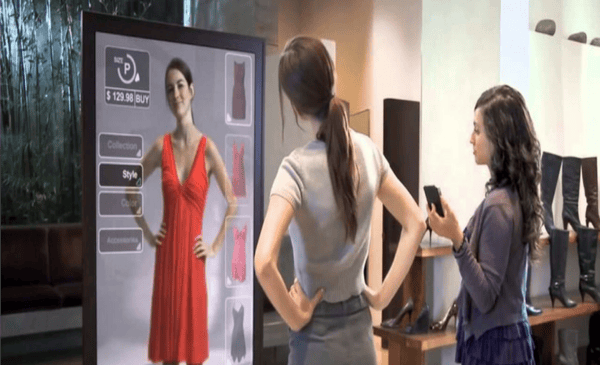How retailers can use 5G to strengthen customer experience
Posted:
2 / 4 / 2020
Tagged:

The blueprint for retail success in 2020 starts with the customer experience, as experiential retailers need to give consumers a reason to get off the couch and into their stores.
5G connectivity has already begun opening up a world of tech-forward possibilities for the retail industry that could result in desired ROI for both the in-store and manufacturing bottom-line.
Whether it’s Amazon’s smart “Go” stores, futuristic mirrors or “smart” supply chain management, the most innovative tools at retailers’ disposal will rely on 5G’s new standard of performance in order to operate.
With 5G as the foundation, retailers can bring their business into a tech-forward space that benefits both themselves and their customers.
What is 5G?
What is 5G and how is it different from 4G? 5G is the next iteration of mobile network advancement. 4G was rolled out in 2012 and was built to accommodate streaming video, high-resolution content and a seamless experience using mobile apps. 5G will unlock new potential through the enhancement of three factors:
- Speed that’s 10x faster (imagine downloading an HD movie in seconds instead of minutes).
- Capacity that enables the connection of more devices in the same network (think smart cities with interconnected traffic lights and trash cans).
- Ultra-low latency – the time it takes to collect, analyze and act on data – which could greatly help technology such as autonomous vehicles.
But, like any new technology, it is important to understand 5G before we can think about leveraging it to better our business and lives. For example, it will be difficult for 5G to penetrate concrete and glass, making indoor reception spotty at best. To deliver 5G signal into malls and stores, building owners will need to have an in-building solution, like a Distributed Antenna System, in place.
Virtual mirrors and the integration of AR/VR

Shopping centers of the future will include either virtual or augmented reality, as those components will be used by 46% of retailers by 2020, according to a report from Gartner.
Imagine holding your phone up to window displays at a particular store and seeing the price of the products on show or being informed of any store-wide sales. Again, the possibilities for this tech are vast but 5G will be the prerequisite to making it happen.
Similar to AR/VR, virtual mirrors take traditional retail mainstays and rethinks their purpose. Customers will be able to stand in front of a mirror and simulate the process of trying on clothes as well as receive “complete the look” recommendations to encourage more purchasing. If the customer likes the virtual ensemble in the mirror, they can purchase it on-the-spot from the mirror’s display. This technology can already be found with the Samsung 75-inch ME Series display.
For retailers, the virtual mirror provides valuable insights into buyer behavior, in addition to encouraging sales. Retailers will now have data on which products are tried-on, but not purchased. This could create price adjustments that adjust more fluidly to demand. But, perhaps even more importantly, the virtual mirror curtails in-store inventory since customers can “see” different sizes and styles virtually.
It won’t just be Amazon
5G could be the weight that evens the scales when it comes to tech elevating the in-store experience. A great example of a retailer already taking advantage of superior connectivity is Amazon Go. 5G could lower the barrier to entry for common retailers to take advantage of some of the same tech strategies already being used by Amazon Go.
The tech-forward convenience store opened to the public in 2018 and, at the time of writing, has 18 locations across the U.S. In these stores, cameras (called Computer Vision) and sensors (Sensor Fusion) work in harmony to determine how customers interact with products (reaching for an item, removing it, placing it back on the shelf, etc.). Then perhaps the most integral factor, Deep Learning, enables Amazon Go’s computers to collect and analyze the data from the cameras and sensors.
All of these technologies require low latency and reliable connectivity to ensure that their process and customer experience is seamless. 5G can enable the cameras and sensors to capture increasingly accurate data and process it instantaneously, enabling the increase of this type of real-time sensing, analyzing and actioning.
A smart supply chain
While retail’s customer-facing tech gets many of the headlines, the back-end capabilities of 5G-backed manufacturing and supply chains may be just as exciting to business owners. As alluded to earlier, if retailers’ stores become “smarter,” they can receive real-time data collection. This information can inform manufacturing of consumer demand and influence production in real-time to make it more agile and efficient.
Whether it is supply chain enhancement, smart mirrors, or AR/VR, all retailers will need the foundation of 5G to bring their business into a new age of connectivity. The onus is two-fold: retailer tenants must ask building management if the appropriate infrastructure is in place for 5G connectivity, and the building management must be prepared to know what is in their building from a tech infrastructure perspective.
Looking to learn more?
Discover how WiredScore drives value for property teams and find out what New York’s most innovative buildings have in common.